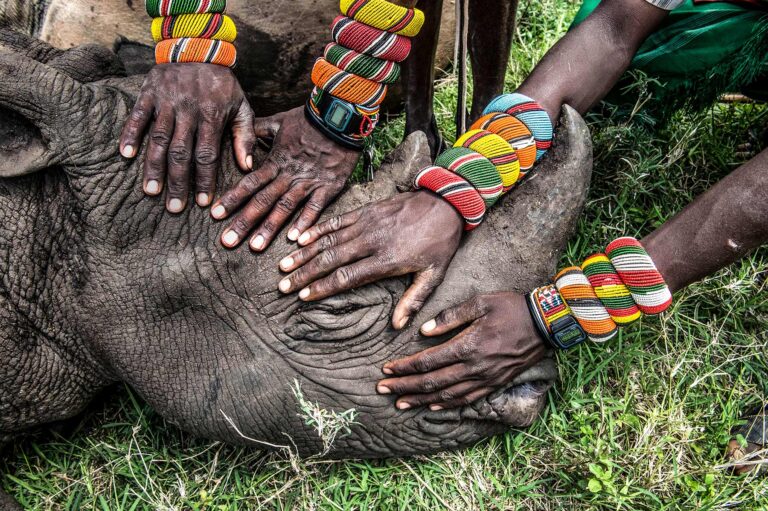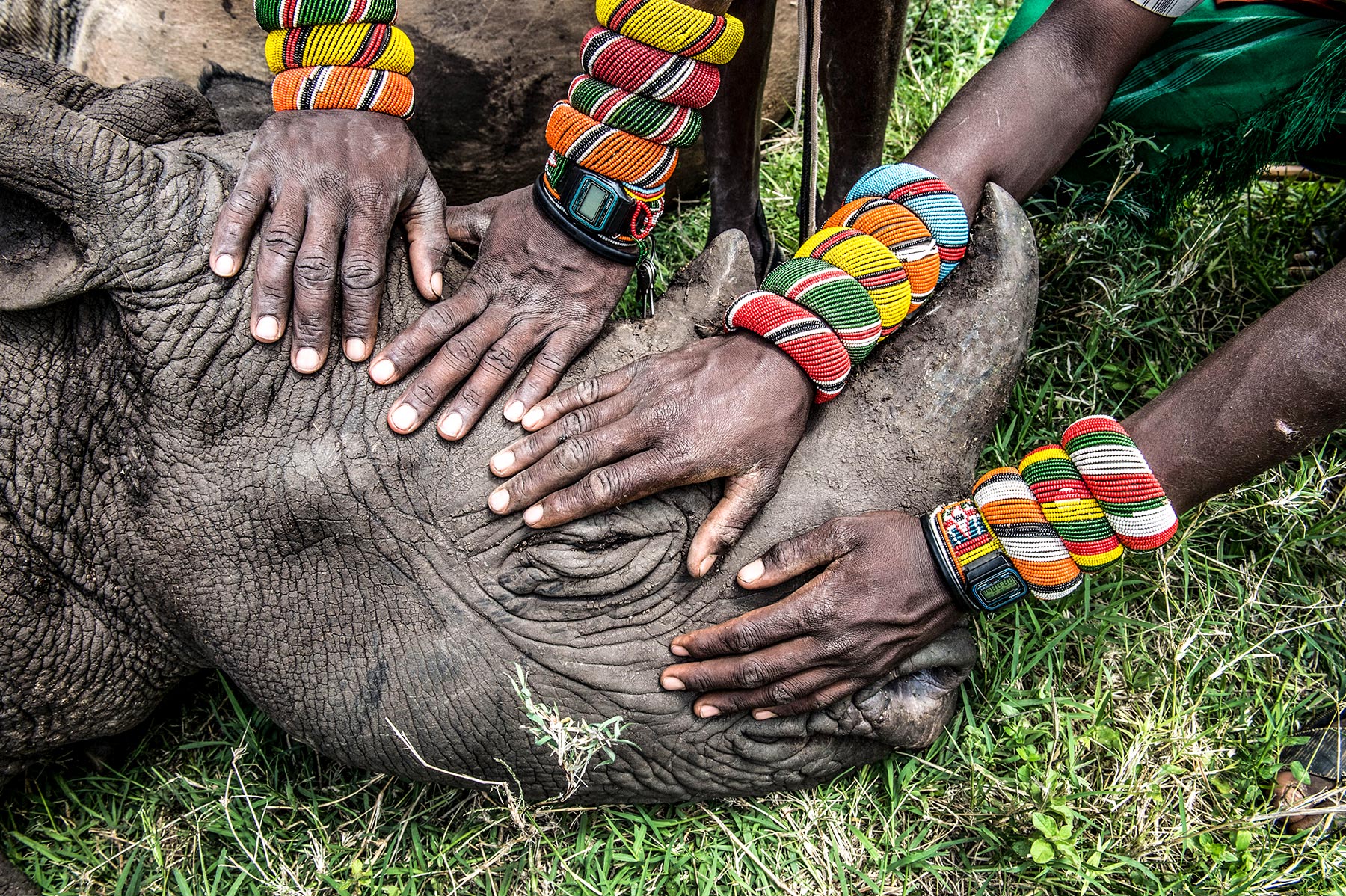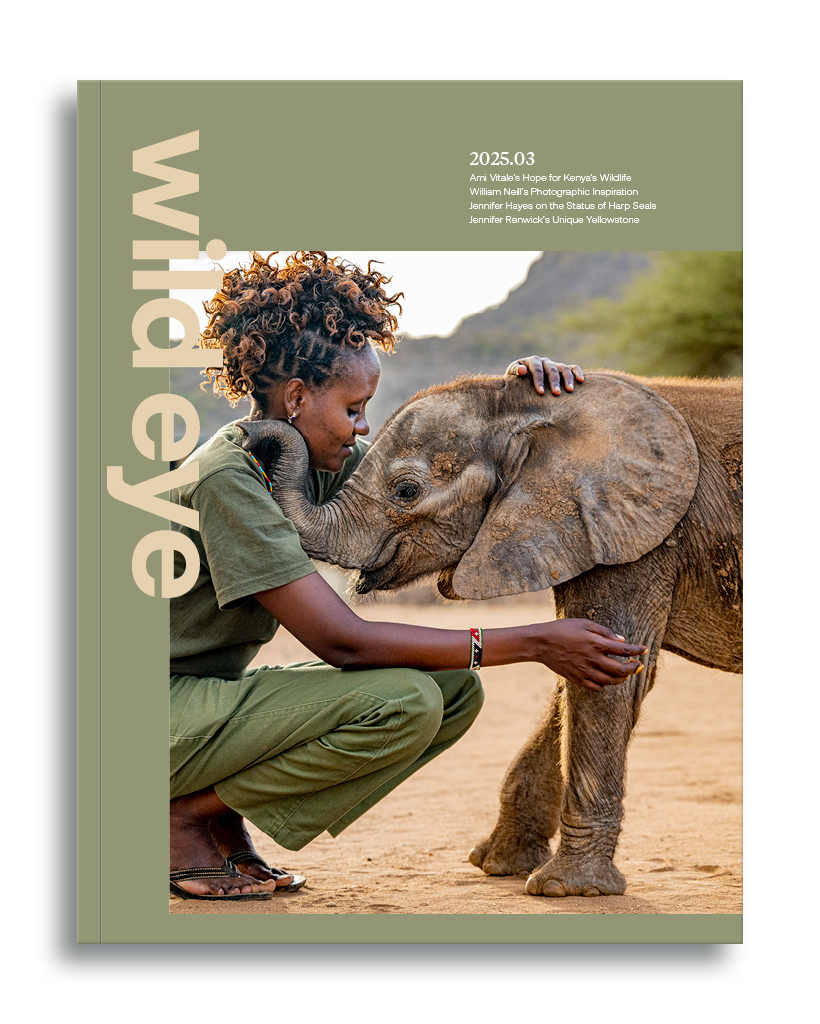
The Future of Our Planet is in Our Hands
We can’t afford to feel overwhelmed or hope that someone else will address our environmental problems. Stories can be transformative and galvanize the meaningful actions necessary for inspiring change.

↑ Lewa Wildlife Conservancy, Kenya Local indigenous community members touch an orphaned black rhino. It was the first time for all the young men to see a rhino, despite living in habitats where they once thrived. Kenya has effectively involved local communities in rhino conservation through education and sustainable wildlife-related livelihoods. Over the past two decades, these initiatives have fostered a strong sense of pride and helped revitalize rhino populations that were near extinction in the 1980s and 1990s, symbolizing hope and resilience.
Words and Image by Ami Vitale
We can’t afford to feel overwhelmed or hope that someone else will address our environmental problems. Stories can be transformative and galvanize the meaningful actions necessary for inspiring change.
What started as a vision to unite photographers in support of grassroots conservation and impactful environmental visual storytelling has grown into a global movement. The initial goal was straightforward: to bring powerful images of our planet into people’s homes, hoping that daily exposure to these visuals would inspire humans. My first sale was sparked by outrage over the U.S.’s plan to reverse the ban on the elephant tusk trade back in 2017. To channel that frustration, I launched a personal print sale to benefit the Reteti Elephant Sanctuary, an organization I’d been working with, raising $50,000 in just a couple of weeks.
I realized we, as nature and conservation photographers, could achieve more by working together, which led to the beginnings of Vital Impacts. I gathered an impressive group of hundreds of the world’s top nature photographers — including National Geographic cover photographers, celebrated fine artists, up-and-coming talents, and even Dr. Jane Goodall — to donate images for sale. Sixty percent of the profits go to conservation groups, while 40% goes directly to the photographers. Even if people don’t buy images, I hope that they get inspired by the work. For the past four years, we’ve run print sales benefiting conservation nonprofits, raising $3.3 million.
Recognizing that this wasn’t enough, I realized we needed to create opportunities for environmental storytelling. In addition to directly supporting innovative community- based grassroots conservation, we now mentor environmental journalists worldwide, offering personalized guidance from top photographers and editors. Last year, our advocacy and networking efforts led to the publication of 175 articles by these journalists in major media outlets. By the end of this year, we’ll have provided online mentorship in storytelling to 884 visual journalists across 79 countries.
Our Live Student Speaker Program, partnering with Changemaker Talent, integrates science and curriculum into classrooms and has engaged over 20,000 students, inspiring the next generation of environmental leaders. Additionally, our initiatives have been featured in global photography festivals and highlighted in media campaigns worldwide.
Given the urgency of the situation — with a 73% decline in Earth’s wildlife over the last 50 years and the threat of irreversible damage if these trends continue — these images and stories can ignite passion, spark change, and drive the collective action needed to make a difference.

Learn more about Vital Impacts at www.vitalimpacts.org.
Explore this Issue

Complementary Article. Subscribe for Full Access.